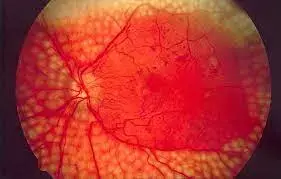- Home
- Medical news & Guidelines
- Anesthesiology
- Cardiology and CTVS
- Critical Care
- Dentistry
- Dermatology
- Diabetes and Endocrinology
- ENT
- Gastroenterology
- Medicine
- Nephrology
- Neurology
- Obstretics-Gynaecology
- Oncology
- Ophthalmology
- Orthopaedics
- Pediatrics-Neonatology
- Psychiatry
- Pulmonology
- Radiology
- Surgery
- Urology
- Laboratory Medicine
- Diet
- Nursing
- Paramedical
- Physiotherapy
- Health news
- Fact Check
- Bone Health Fact Check
- Brain Health Fact Check
- Cancer Related Fact Check
- Child Care Fact Check
- Dental and oral health fact check
- Diabetes and metabolic health fact check
- Diet and Nutrition Fact Check
- Eye and ENT Care Fact Check
- Fitness fact check
- Gut health fact check
- Heart health fact check
- Kidney health fact check
- Medical education fact check
- Men's health fact check
- Respiratory fact check
- Skin and hair care fact check
- Vaccine and Immunization fact check
- Women's health fact check
- AYUSH
- State News
- Andaman and Nicobar Islands
- Andhra Pradesh
- Arunachal Pradesh
- Assam
- Bihar
- Chandigarh
- Chattisgarh
- Dadra and Nagar Haveli
- Daman and Diu
- Delhi
- Goa
- Gujarat
- Haryana
- Himachal Pradesh
- Jammu & Kashmir
- Jharkhand
- Karnataka
- Kerala
- Ladakh
- Lakshadweep
- Madhya Pradesh
- Maharashtra
- Manipur
- Meghalaya
- Mizoram
- Nagaland
- Odisha
- Puducherry
- Punjab
- Rajasthan
- Sikkim
- Tamil Nadu
- Telangana
- Tripura
- Uttar Pradesh
- Uttrakhand
- West Bengal
- Medical Education
- Industry
Decreased oxygen delivery to retinal tissue increases retinopathy risk in young T1D patients: Study

Decreased delivery of oxygen to retinal tissue tied with occurrence non-proliferative diabetic retinopathy (NPDR) in young type-1 diabetes mellitus (DM1) patients, according to a recent study published in the Acta Ophthalmologica.
Diabetic retinopathy (DR) is a vision-threatening disease characterized by hypoxia, vascular alterations and oedema. Oxygen (O2) metabolism is involved in the development of Diabetic retinopathy. New discoveries in retinal O2 metabolism and vascular changes are essential to better understand the pathophysiology of DR. The O2 saturation in larger retinal vessels is a marker of retinal metabolism and vascular function.
A group of researchers conducted a study to determine the contribution of retinal vessel density (VD), central retinal vessel diameter and retinal oxygen (O2) saturation independently of other known risk factors in the development of non-proliferative diabetic retinopathy (NPDR).
Macular optical coherence tomography angiography (OCTA), central retinal artery/vein equivalent diameter (CRAE/CRVE) measurements and retinal oximetry were performed in a cross-sectional study of 166 eyes from 166 individuals with type 1 diabetes (T1D) aged 14–30 years. Multiple logistic regression analysis was used to investigate whether O2 saturation, retinal vessel diameters and vessel density in the deep capillary plexus (VD-DCP) were associated with NPDR, when adjusting for known risk factors. The individuals were allocated to one group without and one group with NPDR.
The Results of the study are as follows:
Multiple logistic regression analysis showed that age (OR = 1.25, 95% CI: 1.04–1.49) and AV-difference in O2 saturation (OR = 0.85, 95% CI 0.77–0.93) were significantly associated with NPDR.
Thus, the researchers concluded that findings suggest that age and lower AV-O2 saturation difference contribute to explaining the grade of NPDR independently of other well-known risk factors. Reduced delivery of O2 to the retinal tissue is associated with the development of NPDR in young patients with T1D and should be given appropriate weight in the risk stratification at early stages of the disease
Reference:
Retinal venular oxygen saturation is associated with non-proliferative diabetic retinopathy in young patients with type 1 diabetes by Nina C.B.B. Veiby et al published in the Acta Ophthalmologica.
https://doi.org/10.1111/aos.15018
Dr. Shravani Dali has completed her BDS from Pravara institute of medical sciences, loni. Following which she extensively worked in the healthcare sector for 2+ years. She has been actively involved in writing blogs in field of health and wellness. Currently she is pursuing her Masters of public health-health administration from Tata institute of social sciences. She can be contacted at editorial@medicaldialogues.in.
Dr Kamal Kant Kohli-MBBS, DTCD- a chest specialist with more than 30 years of practice and a flair for writing clinical articles, Dr Kamal Kant Kohli joined Medical Dialogues as a Chief Editor of Medical News. Besides writing articles, as an editor, he proofreads and verifies all the medical content published on Medical Dialogues including those coming from journals, studies,medical conferences,guidelines etc. Email: drkohli@medicaldialogues.in. Contact no. 011-43720751


